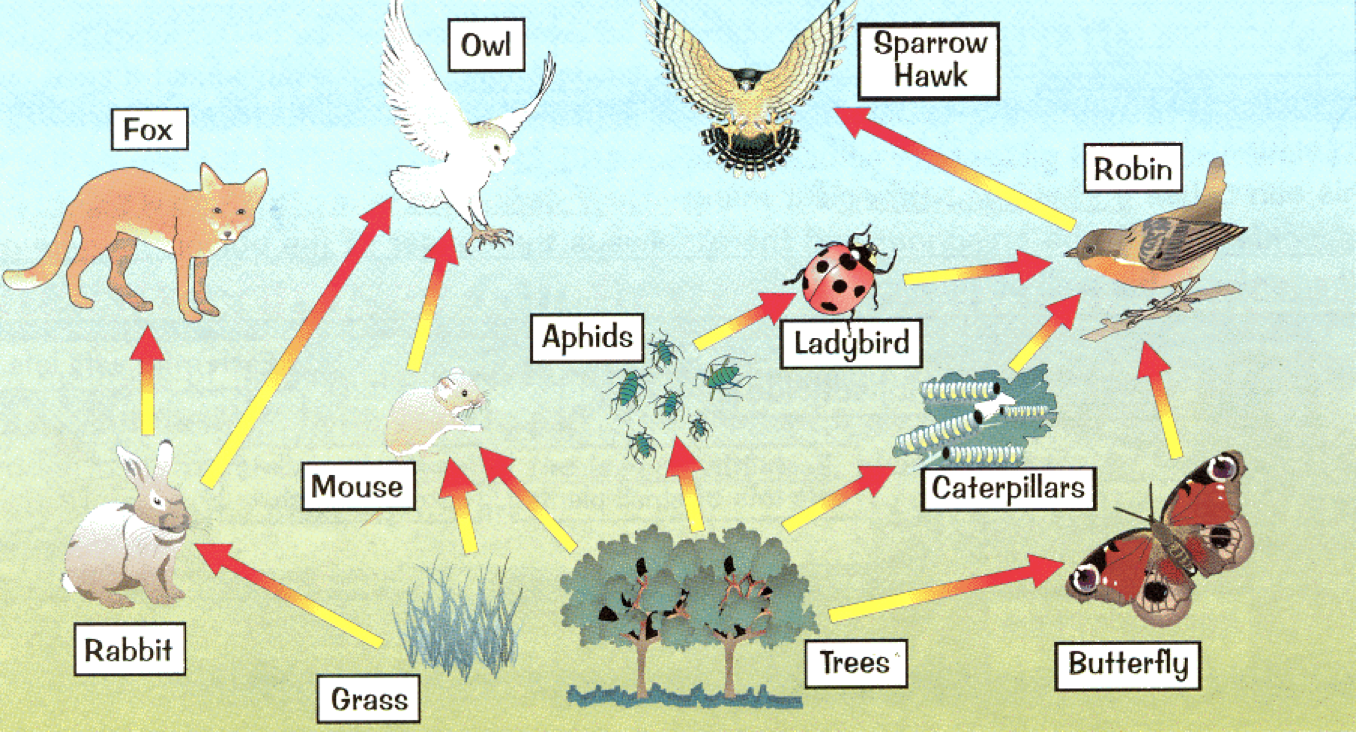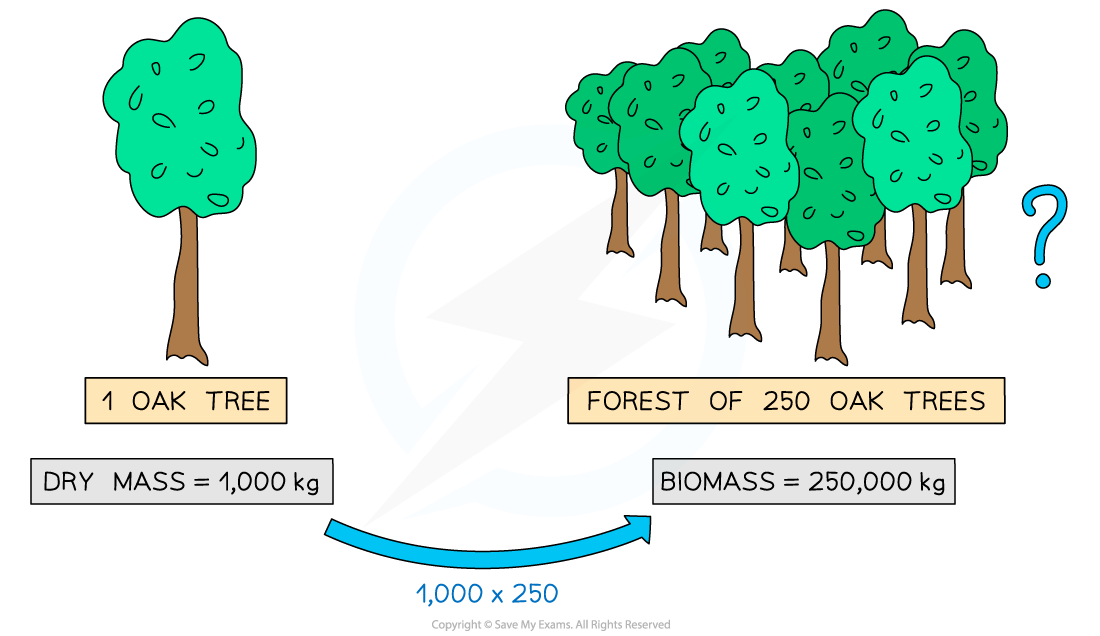6.3.1(b) biomass transfers through ecosystems
spec points
biomass transfers through ecosystems
to include how biomass transfers between trophic levels can be measured
energy and matter in ecosystems
energy flows through an ecosystem and will eventually be lost as heat energy.
matter is cycled (e.g. Carbon and nitrogen cycle)

Food webs show the transfer of energy (and matter) from one trophic level to the next.

food chain definitions
Producer - Makes food own food, usually by photosynthesis
Carnivore - Eats only other animals.
Herbivore - Eats only plants.
Omnivore - Eats both animals and plants.
Primary consumer - Eats producers. Usually a herbivore
Secondary consumer - Eats primary consumer, usually a carnivore but could also be a herbivore
Trophic level – position or stage that something occupies in a food chain
biomass
in ecosystems, plants synthesise organic compounds from atmospheric/aquatic carbon dioxide. majority of sugars synthesized by plants are used by plants as respiratory substrates whereas remaining sugars used for synthesis of biological molecules which forms biomass of plants.
biomass; mass of living material of the organism or tissue, the chemical energy that is stored within the organism or tissue
measuring biomass
biomass can be measured in terms
dry mass of organism/tissue (in a given area)
mass of carbon that an organism or tissue contains
mass of carbon that a sample (i.e. an organism or tissue) contains is generally taken to be 50% of the dry mass of the sample
chemical energy content of dry biomass when burned in pure oxygen, estimated using calorimetry
‘
dry mass
dry mass is mass of organism/tissue after all water has been removed
dry mass of sample can be used to calculate biomass of total population of organisms/of particular area. for example:
If dry mass of one daffodil plant = 0.1 kg, then dry mass (i.e. the biomass) of 200 daffodils = 20 kg (0.1 x 200 = 20)

biomass can change over time
For example, the biomass of deciduous trees decreases over autumn and winter as they lose their leaves
This means that biomass is sometimes given with units of time as well
This shows the average biomass of an organism within a given area over that time period
For example, if the average biomass of a group of oak trees over the course of a year is found to be 13,000 kg, the biomass may be given as 13,000 kg y⁻¹ (this means 13,000 kg per year)
If the average biomass of 1 m² of a grass field over the course of a year is found to be 0.15 kg m⁻², the biomass may be given as 0.15 kg m⁻² yr⁻¹ (this means 0.15 kg per square metre per year)
calorimetry
can be used to estimate the chemical energy stored in dry biomass
Energy is a vital consideration in ecology because every trophic level transfers energy to the subsequent level.
Energy transfer is the main goal of feeding relationships
Calorimetry involves burning the sample of dry biomass in a piece of equipment known as a calorimeter
The burning sample heats a known volume of water
The change in temperature of the water provides an estimate of the chemical energy the sample contains